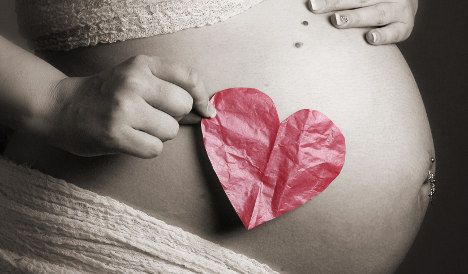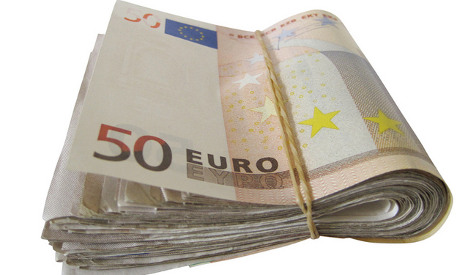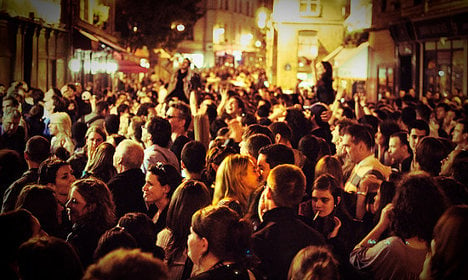France’s National Institute for Statistics and Economic Studies (INSEE) has released its 2015 social portrait of the country and its inhabitants.
Here's a look at some of the key stats that shed light on France in 2015 and also how the country shapes up against the rest of Europe.
Population on the rise

There are more French people than ever before. France’s population, which includes Metropolitan France and the overseas departments, has reached 66.3 million including its overseas territories. If we are talking about Metropolitan France, meaning its overseas territories are excluded, then there are 64.2 million people on French soil. That’s because the population rose by 300,000 during 2014, partly due to natural increase and partly thanks to a slight rise in migration.
By comparison, Germany’s population rose to 81.1 million in 2014, thanks to an increase in migration. The UK’s population rose to 64.7 million due to a natural increase and a jump in migration.
The highest birth rate in Europe

When it comes to making babies, the French are the European champions with a rate of 1.99 children per woman. That puts them slightly ahead of the Irish on 1.96 babies per woman and a figure of 1.89 in Sweden.
In fourth place in the reproduction rankings is the UK, with around 1.83 babies per woman. That's well ahead of Germany on 1.4 babies per woman and Spain, which has a birth rate of less than 1.3.
A fairly high life expectancy
If you live in France you have a good chance of staying around longer than in most other European countries, especially if you’re a woman. With a life expectancy of 85 years in France, only women in Spain (86.1 years) and Italy (85.2) are likely to live longer.
In the UK, the average number of years a woman can expect to live until is 82.9 and in Germany it’s 83.2 However, for men it’s different, with the average life expectancy in the UK being 79.2 years compared to France’s 78.7. Italy tops the chart for men with a life expectancy of 80.3, just ahead of Spain’s 80.2 years.
And high unemployment
France, as everyone knows by now, has record unemployment levels with 10.3 percent of 15–74-year-olds out of work. That rate compares with just five percent in Germany and 6.1 percent in the UK. However despite the figures, France is only slightly above the EU average and well behind Greece which has 26.5 percent unemployment and Spain which is suffering under 21.2 percent unemployment, which rises to 46.6 percent for 15 to 24-year-olds, compared to 24.2 percent in France for the same demographic.
Decent annual salaries

In France the current average annual salary stands at €37,400, which sees it ranked above the EU average but behind Britain, where the average yearly wage is €40,100, Germany where it approaches €42,000 and Sweden which nears €47,000.
Denmark’s workers are the best paid in Europe with the average salary being a whopping €58,800. It Italy the average annual salary is €32,400 and in Spain it’s just €36,000.
Lower poverty rates than the UK and Germany
In France, the percentage of the population living below the below the poverty line has fallen to 14 percent. It’s the second year running that the rate has dropped. That compares favourably to Europe’s major countries with the poverty rate in Germany standing at 16 percent, which is the same as in Britain. In Italy the poverty rate stands at 19 percent and it reaches 20 percent in Spain.
More money to spare

When it comes to disposable income, or what you’ve got left after rent and taxes etc are paid, then the French are not doing too badly compared to their European neighbours.
The average level of annual disposable income stands at €24,773 in France, compared to €22,471 in Germany and €21,654 in Britain. But the French shouldn’t brag too much – Swedes on average have a spare €28,000 to spend on what they like and Danes have €29,300.
Welfare spending
Only Denmark spends more than France on welfare per head of population – and the Danes are only just ahead.
Copenhagen splashes out 34.6 percent of its GDP on social spending compared to 34.2 percent in France. In the UK it’s 28.8 percent of GDP and in Germany it’s 29.5 percent.
Satisfaction with life
When it comes to who are the happiest folk in Europe, it certainly and perhaps not surprisingly isn’t the French, who on average rank life at 7.0 out of 10. That’s just below the European average satisfaction rating of 7.1.
On the top of the pile, as you’d expect if you've looked at happiness surveys before, come Finland, Denmark, then Sweden, whose inhabitants give life an 8 out 10 score on average.
In between France and Finland fall the UK and Germany, where life satisfaction levels hit around 7.4 out of 10.
AND two more stats just for the French...
How many immigrants are there in France?

The latest figures show that there are 5.7 million immigrants living in France, so around 8.7 percent of the total population. Immigration is nothing new – back in 1954 there were 2.3 million immigrants and that figure had risen to 4.2 million by 1990. Of the immigrant population, around four out ten become French nationals.
How may hours do the French work?

This is always a spiky issue given that many around the world think the French work a maximum 35 hours a week. However INSEE’s latest study shows that in fact the average working week is 37.3 hours, though for farmers that number rises to 53.5 hours. Meanwhile, the average working week for bosses and shop staff is 47.1 hours.


 Please whitelist us to continue reading.
Please whitelist us to continue reading.
Member comments